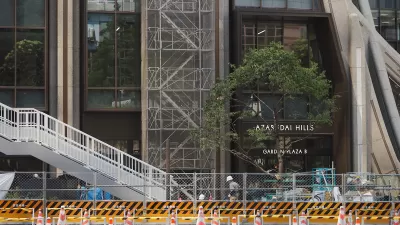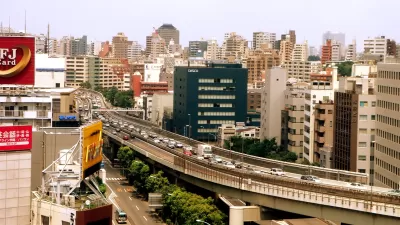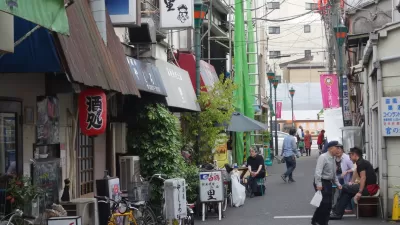In this compelling essay, authors Matias Echanove and Rahul Srivastava take a look at Tokyo's post-war development and explore how lessons learned from its unplanned growth may be useful for other rapidly urbanizing Asian cities today.
In a recent addition to the Rockefeller Foundation's Informal City Dialogues, Matias Echanove and Rahul Srivastava show how user involvement, incremental development, and the integration of neighborhoods into a larger urban system, led to an "economic miracle" in Tokyo. They illustrate how this "Tokyo Model" could be applied in cities and slums in the developing world, potentially redefining "good urbanism" in the 21st century. The authors delve deeply into the Tokyo's unplanned history and features today, which, in fact, “[resemble] the low-rise, high-density habitats one normally associates with cities like Mumbai and Manila”. They affirm that “[t]his is incremental Tokyo, the foundation upon which the world’s most modern city is built.”
They further explain that, “Tokyo was built with loose zoning rules to become a fantastically integrated mixed-use city, where tiny pedestrian streets open up to high-speed train lines.” And when considering Tokyo's post-World War II reconstruction, they explain how “a collection of semi-autonomous neighborhoods” came together through self-reliance, especially in the provision of new housing. Through this, “[l]ocal construction practices, family-owned businesses (including manufacturing units), flexibility of land uses and live-work arrangements created a shadow, homegrown economy that went hand-in-hand with the city’s global-scale, export-orientated industrial development.” They claim that it was this decentralized, organic development that “informed the city's economic success”, challenging today's more commonly accepted narrative that “large-scale, foreign investment” leads to greater social and economic prosperity in developing cities.
The authors point to how mixed-uses, and multi-functional living spaces abound in Mumbai, making the assertion that, “Mumbai’s tool-house is also an avatar of postwar Tokyo’s home-based manufacturing unit.” They conclude that Dharavi, one of Mumbai's notorious slums, could follow Tokyo's path and "bloom into a world-class manufacturing hub.” They warn, however, that any future prosperity “depends on [Mumbai's] local authorities heeding the lessons of Tokyo,” and call on them to jettison policies of slum-clearing and redevelopment, which are currently the norm.
FULL STORY: When Tokyo Was a Slum

Alabama: Trump Terminates Settlements for Black Communities Harmed By Raw Sewage
Trump deemed the landmark civil rights agreement “illegal DEI and environmental justice policy.”

Study: Maui’s Plan to Convert Vacation Rentals to Long-Term Housing Could Cause Nearly $1 Billion Economic Loss
The plan would reduce visitor accommodation by 25% resulting in 1,900 jobs lost.

Planetizen Federal Action Tracker
A weekly monitor of how Trump’s orders and actions are impacting planners and planning in America.

Waymo Gets Permission to Map SF’s Market Street
If allowed to operate on the traffic-restricted street, Waymo’s autonomous taxis would have a leg up over ride-hailing competitors — and counter the city’s efforts to grow bike and pedestrian on the thoroughfare.

Parklet Symposium Highlights the Success of Shared Spaces
Parklets got a boost during the Covid-19 pandemic, when the concept was translated to outdoor dining programs that offered restaurants a lifeline during the shutdown.

Federal Homelessness Agency Places Entire Staff on Leave
The U.S. Interagency Council on Homelessness is the only federal agency dedicated to preventing and ending homelessness.
Urban Design for Planners 1: Software Tools
This six-course series explores essential urban design concepts using open source software and equips planners with the tools they need to participate fully in the urban design process.
Planning for Universal Design
Learn the tools for implementing Universal Design in planning regulations.
Caltrans
Smith Gee Studio
Institute for Housing and Urban Development Studies (IHS)
City of Grandview
Harvard GSD Executive Education
Toledo-Lucas County Plan Commissions
Salt Lake City
NYU Wagner Graduate School of Public Service





























